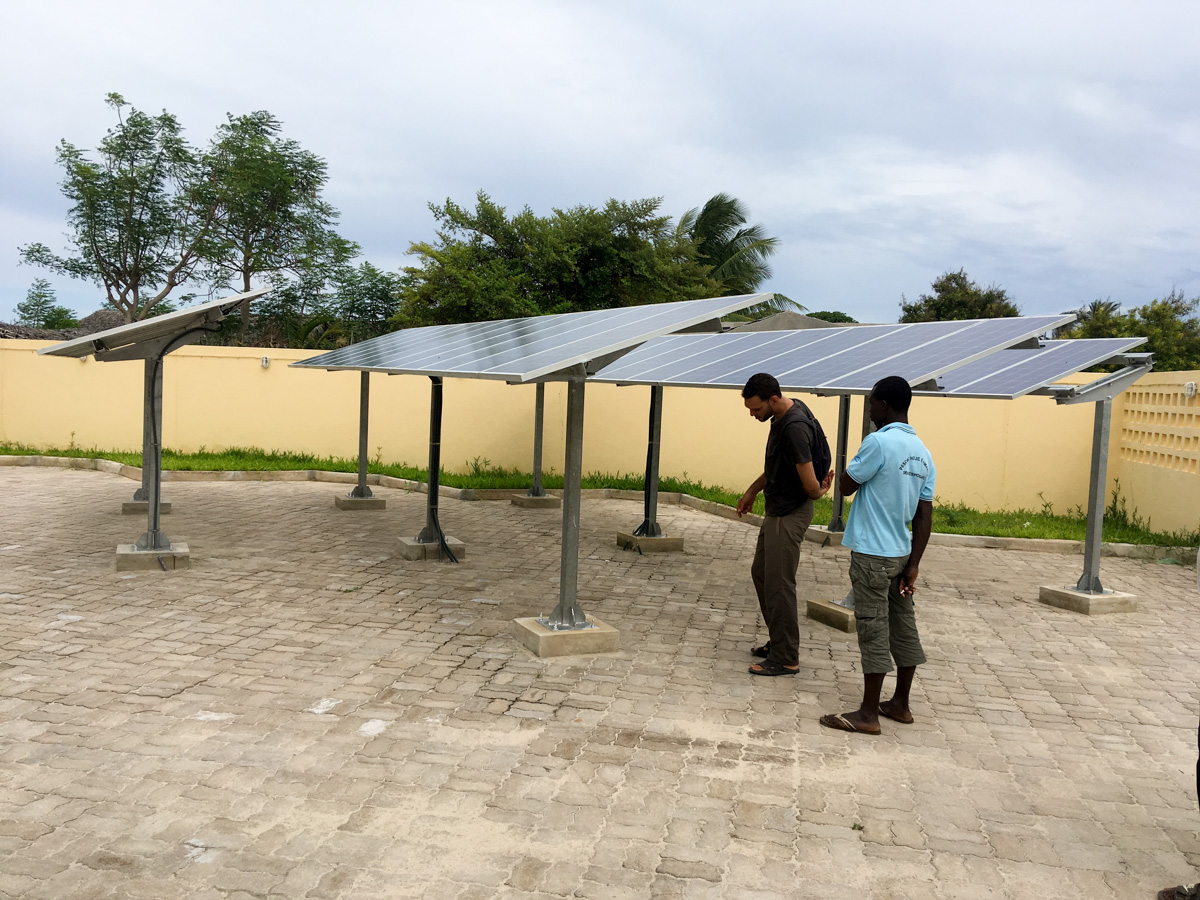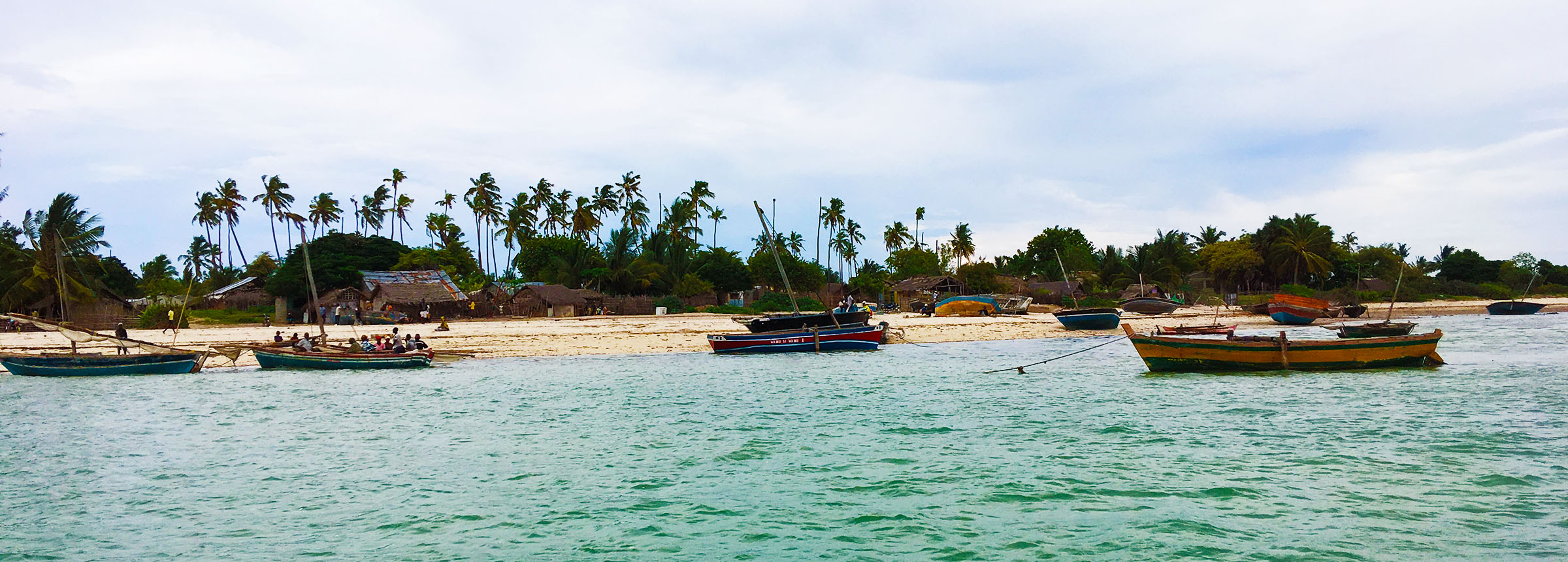
Keeping Fish Fresh in Mozambique
The quest to commercialize solar chillers in Africa. A story with sound effects.
Jenn Holthaus
 This year the Clean Energy team is implementing a new project called GreenTech, where we are working with U.S. refrigeration company SunDanzer to commercialize solar chillers for smallholders in five African countries. In Mozambique, where the electrical grid covers only 28 percent of the population, our mandate is to determine whether there is a feasible business model for small fish traders to increase their incomes by purchasing and using a solar fish chiller or solar ice maker.
This year the Clean Energy team is implementing a new project called GreenTech, where we are working with U.S. refrigeration company SunDanzer to commercialize solar chillers for smallholders in five African countries. In Mozambique, where the electrical grid covers only 28 percent of the population, our mandate is to determine whether there is a feasible business model for small fish traders to increase their incomes by purchasing and using a solar fish chiller or solar ice maker.
In early March I traveled to Mozambique with Bikash Pandey, Winrock’s Director of Clean Energy. In Maputo, the capital, we met with the national Institute of Fisheries and learned that the government has been working with donors to try to improve the artisanal fishing value chain. One strategy has been to build grid-connected or solar-powered chilling facilities in poor fishing communities and hand them over to the community to operate. We visited the newly constructed fish market in Maputo and noted that, while the government’s efforts have been successful in getting fish traders to move their sales from the beach into the fish market stalls, fish is still sold with insufficient refrigeration. Most fish was not on ice.
Since the cold chain for fish is weak, donors and the government are trying to educate consumers about how to recognize fresh fish. A poster on the market wall shows two fish battling for customers. The fish on the left says, “Buy me – I’m fresh, my gills are red” while the fish on the right says, “Buy me…I need money! I’m spoiled, with dark gills, and dirty with flies. If you buy me, you could get sick.”

We flew to Pemba, a small city in northern Mozambique, and traveled four hours on a fishing boat to two islands with strong fishing communities. On Ibo Island, which has grid electricity, we interviewed several fish traders who told us that they use home freezers to chill fish and make ice. In both Pemba and Maputo we observed that fish traders use ice in the form of pedras, or four-kilogram blocks made in plastic containers. While fish traders are using some ice, it’s unlikely they are using the recommended one kilo of ice to one kilo of fish at all times, from the purchase of the fish through transport and sale to customers.
On Quirimba Island, which has no electricity, we interviewed fishermen who told us they do not use ice, and 50 to 66 percent of their daily catch has to go to dried fish buyers because they cannot sell it fresh.

We visited the newly constructed fish market, which has four 500-liter chest freezers powered by 36 150-watt solar panels. Community members were indeed using three of their four chest freezers to store fish — but the fourth was used for cold drinks, cold water and a few pedras. In this case, the government effort has not succeeded at getting fishermen to sell fish from the market instead of the beach.
From this installation it was clear that people have identified solar as a solution for chilling and ice making. But systems at this scale (more than US $65,000) are too expensive for investment by communities or individuals, and will not likely pay for themselves in a reasonable number of years. We will instead be working to commercialize a single, smaller chest freezer with one or two solar panels that could be affordable to individual fish traders.

Mozambique is a beautiful place, and we were grateful for the kindness of many people who made time to talk with us. My favorite part of the trip was spending the night in a guest house on Quirimba Island. We went for an evening swim in the Indian Ocean, and then I lay in bed listening to the total silence — no electrical hum in the background. At 2:30 a.m. I was awakened by a storm; it sounded like someone was throwing huge bunches of grapes onto the metal roof. Waves of rain passed over, then the storm died away within seconds. I heard the peep of a gecko on the wall in my room, and the clickety-clackety of bats moving around inside the roof. Fortunately, I made an audio recording; you can enjoy the sounds too. I recommend listening with your eyes closed.
Related Projects

